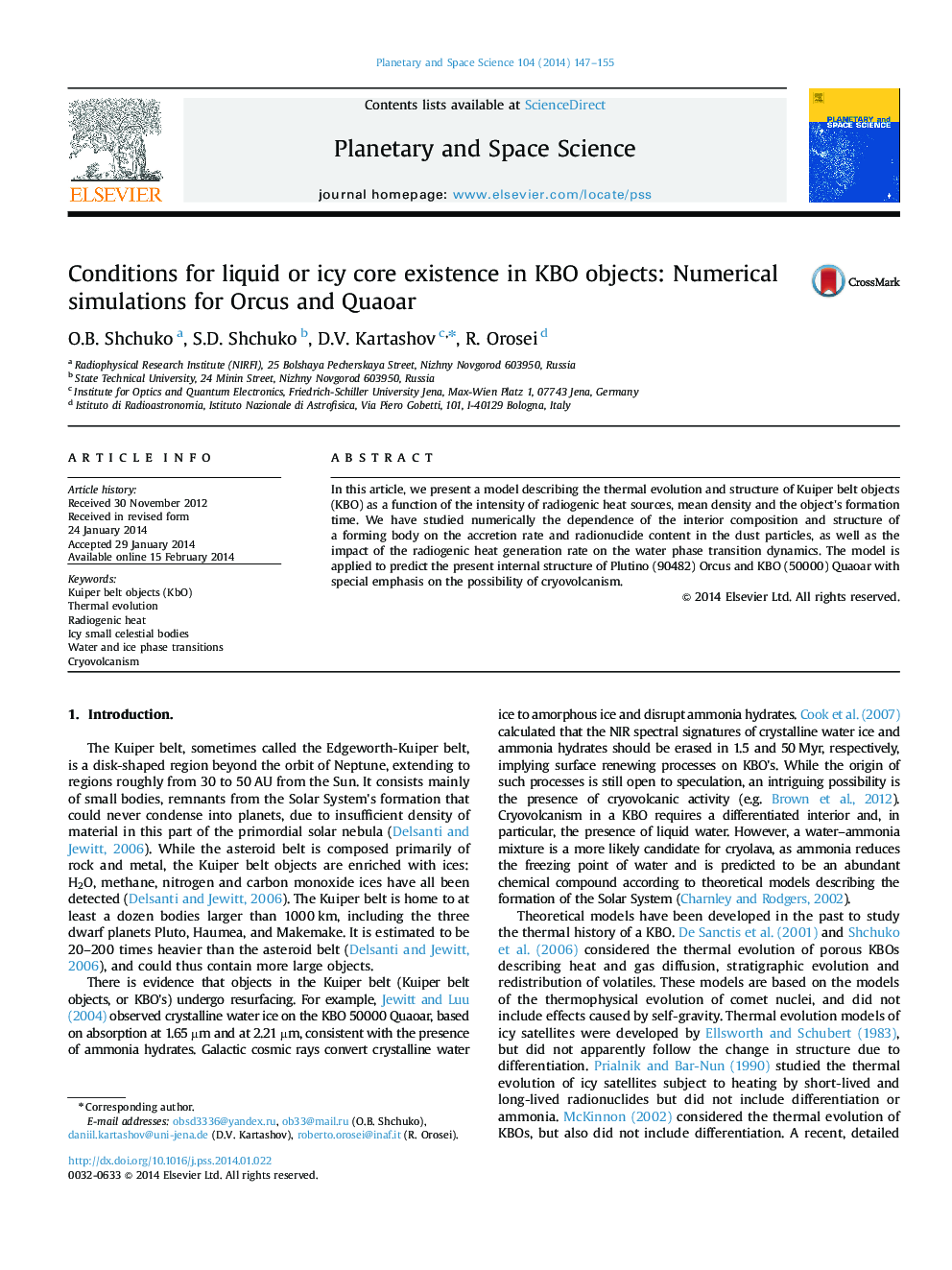| Article ID | Journal | Published Year | Pages | File Type |
|---|---|---|---|---|
| 1781056 | Planetary and Space Science | 2014 | 9 Pages |
•Thermal evolution of KBO objects is investigated numerically.•Influence of different radionuclides on thermal evolution is considered.•Thermal evolution of the ice core during the object׳s history is determined.•Conditions enable cryovolcanism are determined.
In this article, we present a model describing the thermal evolution and structure of Kuiper belt objects (KBO) as a function of the intensity of radiogenic heat sources, mean density and the object׳s formation time. We have studied numerically the dependence of the interior composition and structure of a forming body on the accretion rate and radionuclide content in the dust particles, as well as the impact of the radiogenic heat generation rate on the water phase transition dynamics. The model is applied to predict the present internal structure of Plutino (90482) Orcus and KBO (50000) Quaoar with special emphasis on the possibility of cryovolcanism.
Graphical abstractFigure optionsDownload full-size imageDownload high-quality image (301 K)Download as PowerPoint slide
